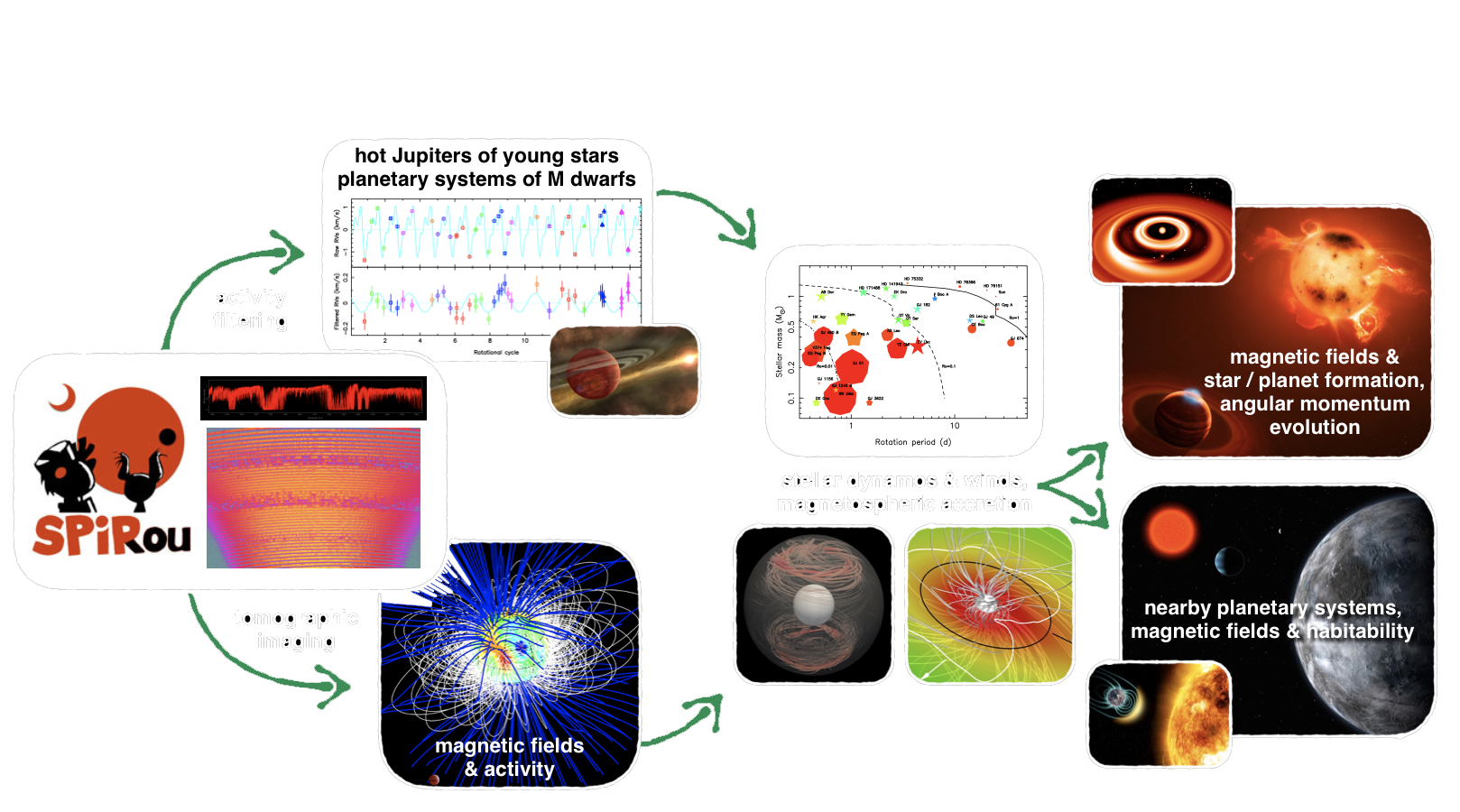NewWorlds is about exploring the formation of new worlds, as well as about detecting and characterizing nearby planetary systems, a top priority for research agencies worldwide; it addresses in particular the impact of magnetic fields on star / planet formation and on HZ terrestrial planets. With NewWorlds, we will achieve a breakthrough in this very competitive field and strengthen our leadership thanks to SPIRou, the nIR spectropolarimeter / high-precision velocimeter integrated in our group and whose performance, unmatched by any other existing or planned instrument worldwide (e.g. Carmenes, HPF, CRIRES+) for our main science goals, will be our key to success.
By further enhancing SPIRou with a key hardware addition (a LFC) and pushing it to its ultimate performance to secure the best possible data, and by exploiting our expertise on all relevant science topics, New-Worlds will unlock current limitations and yield major discoveries. In fact, NewWorlds gathers the most challenging programmes of all SPIRou science goals; this implies substantial risks, that I will mitigate through expertise and dedication, as I did with ESPaDOnS, now the reference for detecting and characterizing stellar magnetic fields. My intimate knowledge of SPIRou puts me in an ideal position for this task and for ensuring that NewWorlds will benefit from the best data.
NewWorlds will also clear the path for key follow-up programmes, by detecting and characterizing many HZ low-mass planets in the solar neighborhood including the transiting ones that TESS or CHEOPS will identify among those we found. By monitoring these key targets during transits, the future space telescope JWST and later the giant european telescope E-ELT will characterize the planet atmospheres through their absorption spectra and look for biomarkers and evidence for extraterrestrial life. Moreover, NewWorlds will ideally complement science programmes with ALMA, by exploring for the first time magnetic fields of embedded protostars and of inner accretion discs that ALMA will not have the ability to probe. Similarly, SPIRou will detect and characterize newborn close-in giant planets that are out of reach of SPHERE / VLT.
Unexpected discoveries made by analyzing data collected for other purposes, are not rare in astronomy. With the extensive sets of SPIRou data that we will collect in our pioneering explorations, NewWorlds will undoubtedly have major Legacy value. We will offer open access to all reduced spectra and associated catalogs by the end of NewWorlds to allow the community to exploit further our unique data sets and use it for a multitude of other science projects, such as detailed atmospheric studies of very-low-mass stars. Software tools developed within NewWorlds will also be made publicly available to the community.


